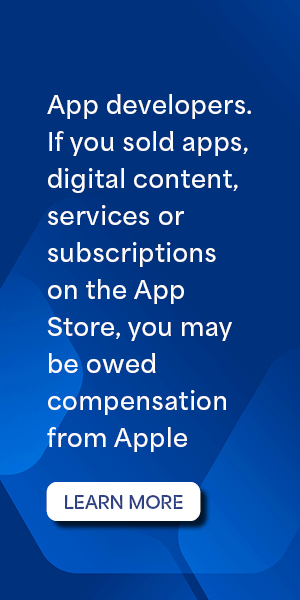In the Year Ahead, Enterprise Mobility Will Hinge on the Back End
Saturday, September 12, 2015

|
Cathal McGloin |
This year demand for enterprise mobility has escalated. With increasing volume and sophistication of mobile app projects, organizations must now pay special attention to how they integrate mobile apps with back-end systems in an efficient and affordable way.
According to a recent survey of global customers at Red Hat, back-end integration and security ranked at the top of the list of mobile challenges. It’s no surprise then that organizations are seeking out mobile hires with back-end development skills and experience. In fact, nearly one in four plan to hire candidates with back-end integration experience this year.
As we witness an upsurge in demand for mobile apps within organizations, along with an increased appetite for emerging technologies such as Internet of Things (IoT), it’s vital to properly navigate the challenges that back-end data integration present. Using the support of enterprise-grade mobile app development platforms and frameworks based on open technologies, greater agility can be brought to bear across the complete app development cycle, particularly if IT teams:
1. Embrace a Platform Approach
When it comes to mobile app development many organizations still struggle with back-end app integration complexity and efficiency and have not yet implemented technologies that can ease this burden.
According to the survey, fifty-five percent of companies building mobile apps are either custom coding back-end integration from scratch or using external sources, such as libraries or external vendor services. This model is not sustainable or scalable - creating custom integration can take between 50 and 70 percent of the costs and time associated with app development, hampering speed-to-market, developer productivity, and mobile ROI. It also lacks centralized control mechanisms, causing security and policy management to be more fragmented across mobile projects.
For this reason Mobile Backend-as-a-Service (MBaaS) and Mobile Application Platforms have emerged. A hosted MBaaS offers a cloud-based platform that uses APIs and other developer tools to connect mobile apps to data storage and other back-end services (e.g., push, data sync, user management) available through the cloud.
An enterprise-grade Mobile Application Platform goes beyond this to offer collaboration across front-end and backend development, MBaaS capabilities, integration with complex enterprise applications, and centralized control over security and policy management.
2. Adopt an API-based Architecture
To drive agile back-end app development, teams must embrace a lightweight, loosely coupled architecture that allows composition of back-end services in a reusable way. This is enabled by an API-based and microservices approach, where components can be centrally discovered, accessed, and managed.
A focus on APIs promotes reusability, speeding up the entire development process. Teams must also make centralized control of back-end integrations a priority so that sensitive data, systems and apps are protected from a security standpoint.
3. Reduce Complexity Connecting to Heterogeneous Systems
High-value mobile experiences require access to cloud services including storage, authentication, caching, and more. In this regard, back-end complexity shifts to the cloud to enable more efficient data-level management and scaling. This is addressed by MBaaS functionality.
However, when it comes to more complex integration with a wide range of enterprise systems and applications, many of which are legacy systems (e.g. CRM, ERP, and database applications, as well as industry-specific applications such as accessing flight management systems at airports or electronic medical records for healthcare), a hosted MBaaS play may not be enough. In this case, a Mobile Application Platform that has been architected for complex enterprise integration enables developers to build high-performance and secure interactions with heterogeneous systems and services.
4. Acknowledge the Role of DevOps in Mobile
Agile Development and DevOps approaches are critical to today’s mobile app development projects - yet only 26 percent of the Red Hat mobile survey respondents had implemented DevOps practices for their mobile app development. Since mobile is a continuous cycle of development and deployment, agility does not just apply to the developer, but is equally important in the continuous integration and deployment of mobile apps.
This approach calls for greater collaboration and coordination across all functions involved in the app lifecycle and, when at full throttle, can collapse time-to-market. Mobile Application Platform technologies, based on a Platform-as-a-Service (PaaS) support a DevOps approach by enabling greater cross-functional collaboration, mobile app lifecycle management, and flexible deployment.
As organizations evolve toward Platform-as-a-Service (PaaS), mobile as well as other enterprise application development projects may be in for a turbocharge.
Putting it All Together
Though mobile projects have surged, companies are still in the fairly nascent stage of their mobile maturity, facing greater development complexity as they integrate with multiple back-end data sources in order to create custom apps that improve both operational productivity and customer engagement.
Tackling back-end integration on a per-app basis can not only be unsustainable, but can also be impossible to scale. While we’ve seen agile toolkits and methods embraced for front-end app development, such practices must become a reality on the back-end as well.
Via MBaaS, Mobile Application Platforms, PaaS, and DevOps approaches, teams can leverage flexible, interoperable and cloud-based application development and delivery models that promote speed without sacrificing control. In 2015, this can allow organizations to capture greater mobile success.
Read more: http://www.redhat.com/en
This content is made possible by a guest author, or sponsor; it is not written by and does not necessarily reflect the views of App Developer Magazine's editorial staff.

Become a subscriber of App Developer Magazine for just $5.99 a month and take advantage of all these perks.
MEMBERS GET ACCESS TO
- - Exclusive content from leaders in the industry
- - Q&A articles from industry leaders
- - Tips and tricks from the most successful developers weekly
- - Monthly issues, including all 90+ back-issues since 2012
- - Event discounts and early-bird signups
- - Gain insight from top achievers in the app store
- - Learn what tools to use, what SDK's to use, and more
Subscribe here













